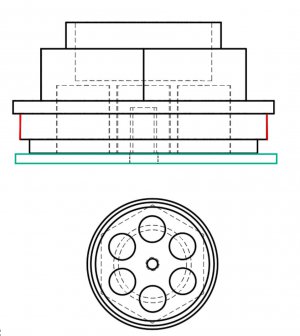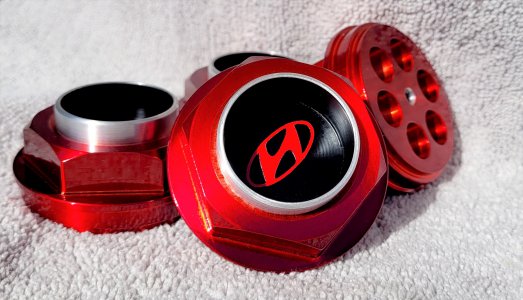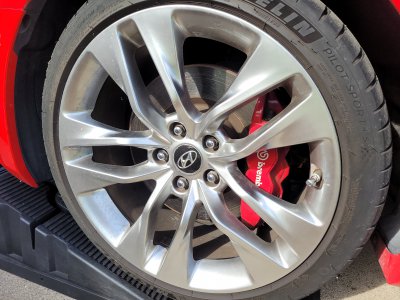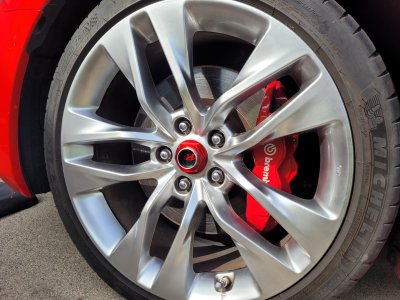Well, better late than never.
By the time the stock got here I had decided to forego the fake threads on the hub. That's a detail that would have been so small that once on the car it wasn't really going to show up, so, not worth the effort.
I also decided that the recess in the bottom of the part, originally designed so I could use some set screws to retain the whole nut in the wheel's hub was more trouble than it was worth as well. So I shorted the whole part and just put a 1/4"x20 thread and made some crossbars to register in the wheel hub. (green lines)

After making the first one I felt that it was pretty heavy so I measured it and it was 190 grams! That begat the six holes in the bottom, which took out almost 80 grams of aluminum! Plus, I wanted to mess with the circle function on my TouchDRO setup since I'd never used it for something other than a test.
Ok, back to my original question, order of operation. Yes, it definitely makes a difference, even in a relatively simple part like this. I considered BladesIIB's idea but since it was the opposite of mine I just chose to ignore the ton of experience and talent he has. ¯\_(ツ)_/¯
So on the first part I machined the bottom stuff first, then flipped the part and did the center bore before removing the part and putting it in the mill for the hex. As soon as I went to mount the piece in the mill vise I realized exactly why BladesIIB thought I should do the hex first! The amount of material that the vise contacted was really small, like .245". (red lines on drawing above) Had I done the hex before the lathe work, I would have had a lot more surface area to grab on to. I knew at this point that I needed to just go slow and take smaller cuts when making the hex.
I finished the first nut and switched to BladesIIB's idea, reversing the order. I figured once I got the hex done I could then clamp the lathe chuck onto the hex and have a more solid setup. What I didn't anticipate was that the .250" "hub" above the hex stopped me from being able to get the chuck jaws onto the hex at all! So I had to grab it with inside jaws, expanding out into the hub ring. Of course that hub area is pretty thin walled so I couldn't really crank the chuck jaws too tight but it worked out as I again just went to smaller DOC's.
Here are some pictures of the finished project.



What did I learn? That even when you overthink something, dwelling on it for days and days before starting and getting opinions from people far smarter than myself, there's still going to be something that nobody could have predicted.
But hey, this was a fun project and it came out as good as I'd hoped and I kept myself busy for countless hours.




